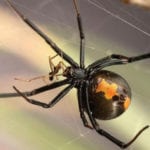 Weird Stuff
Weird Stuff  Weird Stuff
Weird Stuff  Our World
Our World 10 Ways Your Christmas Tree Is More Lit Than You Think
 Movies and TV
Movies and TV The 10 Coolest Stars to Set Sail on The Love Boat
 History
History 10 Things You Didn’t Know About the American National Anthem
 Technology
Technology Top 10 Everyday Tech Buzzwords That Hide a Darker Past
 Humans
Humans 10 Everyday Human Behaviors That Are Actually Survival Instincts
 Animals
Animals 10 Animals That Humiliated and Harmed Historical Leaders
 History
History 10 Most Influential Protests in Modern History
 Creepy
Creepy 10 More Representations of Death from Myth, Legend, and Folktale
 Technology
Technology 10 Scientific Breakthroughs of 2025 That’ll Change Everything
 Weird Stuff
Weird Stuff Ten Bizarre Facts About The Doge Meme
 Our World
Our World 10 Ways Your Christmas Tree Is More Lit Than You Think
 Movies and TV
Movies and TV The 10 Coolest Stars to Set Sail on The Love Boat
Who's Behind Listverse?

Jamie Frater
Head Editor
Jamie founded Listverse due to an insatiable desire to share fascinating, obscure, and bizarre facts. He has been a guest speaker on numerous national radio and television stations and is a five time published author.
More About Us History
History 10 Things You Didn’t Know About the American National Anthem
 Technology
Technology Top 10 Everyday Tech Buzzwords That Hide a Darker Past
 Humans
Humans 10 Everyday Human Behaviors That Are Actually Survival Instincts
 Animals
Animals 10 Animals That Humiliated and Harmed Historical Leaders
 History
History 10 Most Influential Protests in Modern History
 Creepy
Creepy 10 More Representations of Death from Myth, Legend, and Folktale
 Technology
Technology 10 Scientific Breakthroughs of 2025 That’ll Change Everything
10 Startling Discoveries About Plants And Their Habits
At first glance, plants are a mundane part of life. From the grass on your front lawn to the towering trees, they cover the Earth in a blanket of green and have become an expected, yet ignored, part of our existence.
It seems that they do nothing else other than grow and look pretty in our flowerpots. Yet, plants hold a hidden world among their leaves. They have a host of fascinating abilities that were once unknown.
10 They Help You Live Longer

The benefits of having pets is well-documented. Who knew the same could apply to plants?
A study conducted by researchers at the Harvard T.H. Chan School of Public Health and Brigham and Women’s Hospital found that simply having plants around the house was enough to lower the death rate by 12 percent. More than 100,000 US women were included in the study. Those with the most greenery around their homes—such as grass, trees, and bushes—were found to face lower rates of depression, kidney disease, respiratory disease, and cancer.
Reasons for this surprising trend could stem from having more space to socialize or exercise in, lower levels of air pollution, and improved mental health. Or it may simply be due to nature’s naturally soothing effect.
“It is important to know that trees and plants provide health benefits in our communities as well as beauty. The finding of reduced mortality suggests that vegetation may be important to health in a broad range of ways,” stated Linda Birnbaum, director of the National Institute of Environmental Health Sciences.[1]
Turns out that the elixir of life doesn’t come in the form of a magical potion or fountain. Instead, it’s in the shape of your friendly potted fern.
9 They Contribute To Pollution

The phrase “alien invader” invokes images of a little green man from space armed with lasers and bent on world domination. What most people don’t know is that it also describes a very fickle, stubborn, and voracious plant that is hell-bent on terrorizing the South.
Kudzu, like peanuts, is a member of the legume family. Unlike peanuts, it is one of the most invasive species in the world, growing at a rate of 1 meter (3 ft) every three days. First brought to the US in 1876, it now spreads at a rate of 50,000 hectares per year, smothering the land and eating its way through houses, trees, utility poles, and delicate forests.
Although the fact that it destroys entire ecosystems is devastating enough, kudzu is also contributing to the rising level of greenhouse gases. Soil is made up of vast amounts of carbon. This carbon comes naturally as organisms, matter, and wastes decay into the ground, locking it in like a reservoir. As time passes, greenhouse gases are released into the air as soil microbes break down the matter.[2]
Instead of helping the environment, kudzu changes the rate at which the matter degrades and increases the amount of carbon released from the soil. Its leaves and stems are easier for the microbes to break down. In the overgrown forests in which it invades, kudzu encourages the microbes to digest plant matter faster, releasing up to 4.8 tons of carbon per year. This is startling enough because plants are often seen as nature’s warriors that are armed to clean the air.
8 They Can ‘Hear’
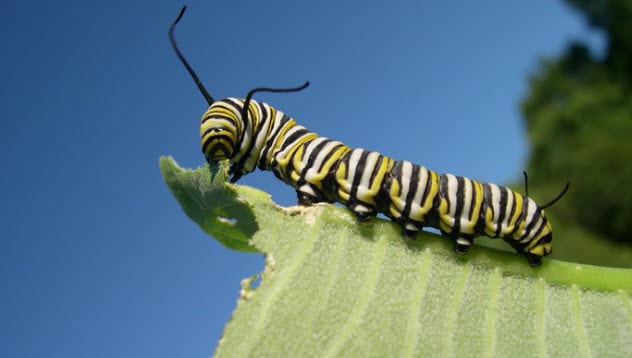
Being eaten alive is one of the worst ways to go. Thankfully, plants lack the capabilities to know that they are being washed, cut, and prepped for a salad. Or do they?
Researchers at the University of Missouri–Columbia have found that plants actually put up defenses in response to the snacking sounds of caterpillars. In the experiment, caterpillars were placed onto a cabbage-like species. Then, the caterpillars were removed and vibrations of the munching noises were recorded and played back.
In a surprising discovery, it was revealed that the plants actually produced mustard oil in response to the perceived attack, a chemical meant to ward off predators. They were even able to distinguish between vibrations that meant danger and others made by wind and insect mating calls. It is hypothesized that as the sound waves make the leaves vibrate, sensitive proteins within the leaves help them perceive the stimulus as noise.
Heidi Appel, a research scientist in the study, explained, “Our work is the first example of how plants respond to an ecologically relevant vibration. We found that feeding vibrations signal changes in the plant cells’ metabolism, creating more defensive chemicals that can repel attacks from caterpillars.”[3]
Perhaps sound can replace pesticides, becoming the next form of weapon against pests.
7 They Water Themselves
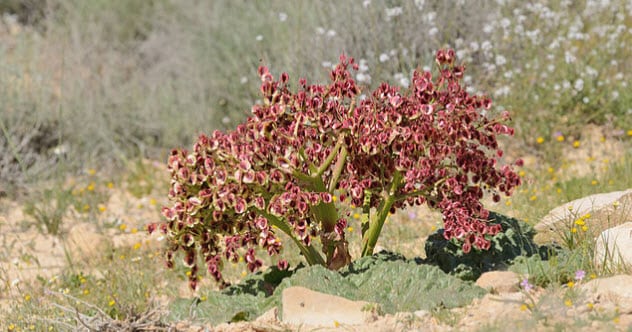
What’s stranger than a plant that pollutes and a plant that hears? One that waters itself with no hands necessary.
The desert rhubarb plant possesses this ability, which would make any gardener jump with joy. It even harvests 16 times more water than surrounding species.
Like any other desert plant, the species has evolved to brave the tough, searing temperatures and does so in a crafty way. Each of its one to four leaves can reach up to 71 centimeters (28 in). The wax-covered ridges on the leaves’ surface act like mountains that channel water toward the single root in the plant’s center.[4]
The mechanism allows it to gather as much water as a plant in the Mediterranean, along with soaking the ground beneath it to a depth of at least 10 centimeters (4 in). Perhaps plants are smarter than we give them credit for.
6 They Transform Into Beating Hearts
We’ve come a long way in the medical field. The rise of civilization gave way to a series of scientific breakthroughs, with new discoveries lighting up the path to bigger and better accomplishments. In fact, some of that road is paved with spinach!
Scientists were able to transform a spinach leaf into human heart tissue that beats liquid through its plant veins, overcoming the problem that laboratories faced in making vascular systems with tiny, delicate blood vessels. These capillaries are only the length of a hair’s width. Despite their size, they have a very important job to do: Without them, the cells in your organs wouldn’t be able to get the blood they need.
Luckily, spinach is crammed with a system of veins that transport nutrients around its tissue. Plant cells are removed from the leaf, leaving behind a ghostly white frame of cellulose that is then dipped into live human cells. Human tissue grew around the frame, becoming one with the tiny veins and transforming the spinach into a beating miniature heart.[5]
In time, this may benefit patients with damaged heart tissue from cardiac arrest or other illnesses.
5 They Eat Each Other
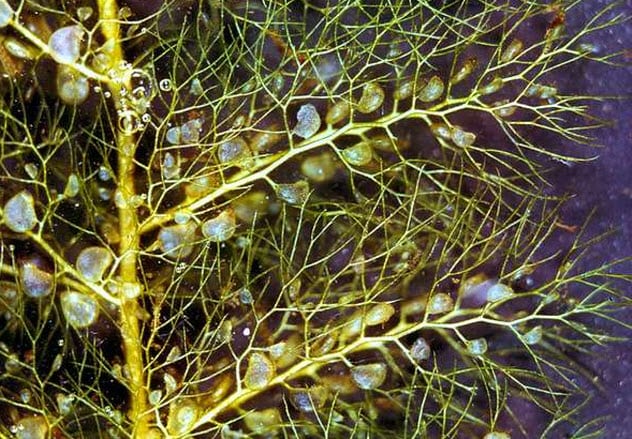
Though they have often been the epitome of vegetarianism and veganism, plants are far from peaceful. In the case of Venus flytraps and pitcher plants, they are predators of the insect world, preying on its unsuspecting inhabitants. In other cases, however, they prey on their own kind.
Bladderworts live in rivers, lakes, and soggy soil. Like Venus flytraps, these oddly named plants boast traps of their own: Underwater, their leaves hide hundreds of tiny, hollow sacs. The pressure inside is lower than the pressure outside. When unsuspecting worms or larvae brush up against a trigger hair, a secret door jerks open and water flows inside, carrying the prey with it to its doom.
But among the insects and nematodes, biologists have discovered something strange: algae inside the bladderworts’ stomachs. Had they been accidentally sucked in? Or were they part of the plants’ diet?
Marianne Peroutka and her colleagues at the University of Vienna discovered that algae made up about 80 percent of the traps’ contents in certain conditions. The percentage was even higher among bladderworts living in soft water (where there is a low amount of ions and minerals).
Fewer animals live there, which means fewer prey. The bladderworts may make up for it by digesting algae, giving us a firsthand glimpse at the existence of omnivorous plants.[6]
4 They Cry For Help
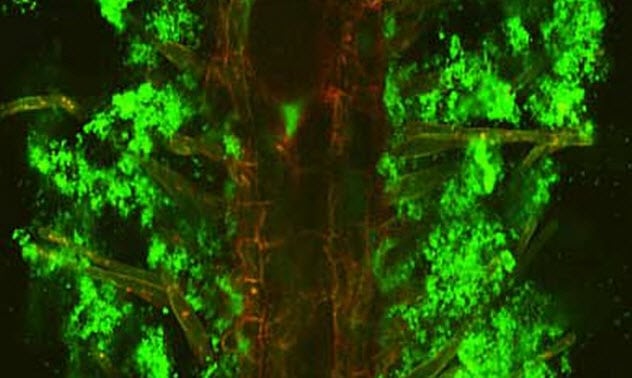
Though they can’t talk, plants use chemicals that act as a communication device. When under attack by bacteria, for example, the plants call to their roots for help. The roots then emit an acid that sends beneficial bacteria to their aid.
Harsh Bais and his colleagues at the University of Delaware experimented by infecting the leaves of thale cress with a pathogen. Those whose roots were protected with the microbe Bacillus subtilis, however, survived without a scratch.
A long-distance transmission was detected in which the leaves called to the roots for help. Thanks to the Bacillus, the roots secreted malic acid, a chemical that attracts the microbe and strengthens the defense barriers.
The study revealed that, instead of acting as defenseless targets, many plants actually have an effective weapon up their sleeve. “Plants are a lot smarter than we give them credit for,” said Bais.[7]
3 They Learn From Experience
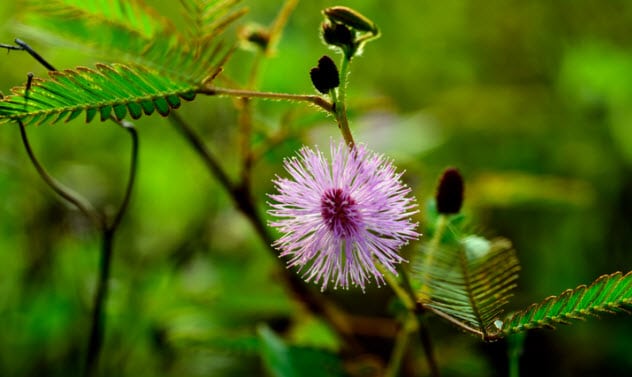
As revealed before, plants aren’t as brainless as they seem. In fact, new research reveals that they may even be intelligent.
Michael Pollan, author of The Omnivore’s Dilemma, explained that “they have analogous structures . . . ways of taking all the sensory data they gather in their everyday lives . . . integrate it and then behave in an appropriate way in response. And they do this without brains, which, in a way, is what’s incredible about it.”[8]
Like humans, they can “hear” the crunching of a hungry caterpillar and “call” to microbes for help against pests. Pollan also believes that they can detect water and gravity, much like a human, and shift the direction in which their roots grow if they come across a rock in the ground.
But do they feel pain?
“You can put a plant out with a human anesthetic,” Pollan continues. As remarkable as it sounds, it does not prove that plants sense pain. But while they lack nerve cells, plants do send electrical signals and secrete neurotransmitters, such as dopamine and serotonin, that are found in the human brain.
This suggests evidence for another eye-opening claim: Plants can actually learn and remember. In fact, biologist Monica Gagliano conducted an experiment in which mimosa plants were dropped from a height without being hurt. When touched, the leaves folded in on themselves. After the fifth or sixth drop, however, the plants stopped responding and seemed to “learn” that they were in no danger, even retaining the information for up to a month.
Pollan explains, “The line between plants and animals might be a little softer than we traditionally think of it as.”
2 They ‘Recognize’ Their Siblings
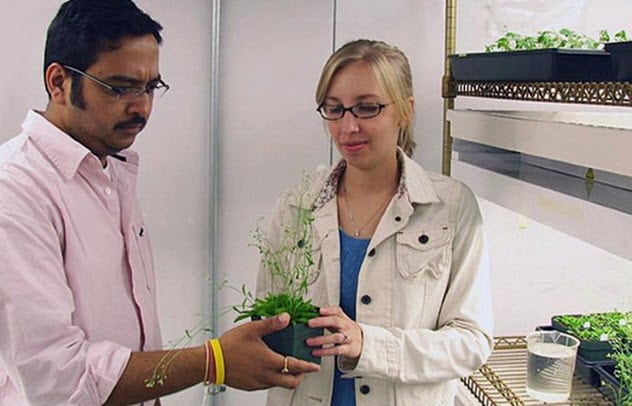
Researchers in Canada found out that when sea rockets are grown together with siblings, they “play nice” and purposefully keep their roots small and close by. They twine their leaves together. But with an unrelated plant, the story is different: The sea rocket competes for nutrients by developing longer roots and grows rigid so that its leaves do not touch those of the other plant.
Researcher Harsh Bais used thale cress to search for ways in which they identify each other as siblings and not as strangers. Seedlings were either exposed to root secretions from themselves, their family members, or unrelated plants. The length of their lateral roots was then measured. It was concluded that the roots from the plants exposed to strangers were longer.
The study may prove helpful for gardeners. Bais stated, “Often, we’ll put plants in the ground next to each other, and when they don’t do well, we blame the local garden center where we bought them or we attribute their failure to a pathogen. But maybe there’s more to it than that.”[9]
1 Plant Telephones
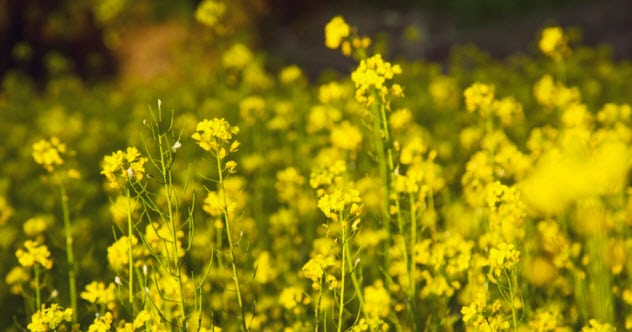
Ecologist Roxina Soler and her colleagues discovered that plants can be used as miniature communication devices—not by humans but by the bugs that live both aboveground and belowground. This leads to what we can guess is an interesting conversation.
When they move in underneath the soil to feast on the plant’s roots, the bugs send a chemical signal up the leaves to warn those aboveground that the plant is occupied. This avoids the awkward situation of having to compete for the same plant.
It seems that, through natural selection, the underground and aboveground insects developed this crafty mechanism to detect each other. The phone lines also benefit parasitic wasps that search for places to lay their eggs. The leaves secrete chemicals that communicate whether or not the roots are vacant.[10]
Although it is unknown how universal this system is, the ability for bugs to use plants as biophone lines proves interesting nonetheless.
For more fascinating facts about plants, check out 10 Incredible Plants That Belong In ‘Avatar’ and 10 Plants That Want To Kill You.





